Different Metrics for Singular Value Optimization in Near-Field Antenna Characterization
Abstract
1. Introduction
2. The Problem
3. The SVO Approach under Different Perspectives
3.1. Discretization
3.2. Ill-Conditioning
3.3. Condition Number
3.4. Shannon Number
3.5. Mutual Information
3.6. Fisher Information
3.7. Determining N and Optimizing the Functionals
4. Numerical Results
4.1. Horn Antenna
4.2. Array
5. Conclusions and Future Developments
- It formulates the NFFF transformation problem as a linear inverse one;
- It uses an effective representation of the aperture field of the AUT (PSWFs);
- It determines the “optimal” near-field samples by maximizing the information acquired by the samples;
- The information measure acquired so far has been based on the Shannon information.
- To analyze the performance of SVO when different information metrics are considered.
Author Contributions
Funding
Institutional Review Board Statement
Informed Consent Statement
Data Availability Statement
Conflicts of Interest
References
- Severcan, M. Restoration of images of finite extent objects by a singular value decomposition technique. Appl. Opt. 1982, 21, 1073–1076. [Google Scholar] [CrossRef]
- Kao, C.M.; Pan, X.; La Riviere, P.J.; Anastasio, M.A. Fourier-based optimal recovery method for anti-aliasing interpolation. Opt. Eng. 1999, 38, 2041–2044. [Google Scholar] [CrossRef]
- Gori, F.; Guattari, G. Shannon number and degrees of freedom of an image. Opt. Commun. 1973, 7, 163–165. [Google Scholar] [CrossRef]
- Stern, A.; Javidi, B. Shannon number and information capacity of three-dimensional integral imaging. J. Opt. Soc. Am. A 2004, 21, 1602–1612. [Google Scholar] [CrossRef] [PubMed]
- Frieden, B.R. Evaluation design and extrapolation methods for optical signals, based on use of the prolate functions Progress in Optics. In Progress in Optics; Wolf, E., Ed.; North-Holland: Amsterdam, The Netherlands, 1971; Volume 9, pp. 311–407. [Google Scholar]
- Luttrell, S.P. A new method of sample optimisation. Opt. Acta 1985, 32, 255–257. [Google Scholar] [CrossRef]
- Luttrell, S.P. The use of transinformation in the design of data sampling schemes for inverse problems. Inverse Probl. 1985, 1, 199–218. [Google Scholar] [CrossRef]
- Luttrell, S.P. Prior knowledge and object reconstruction using the best linear estimate technique. Opt. Acta 1985, 32, 703–716. [Google Scholar] [CrossRef]
- Blacknell, D.; Oliver, C.J. Information content of coherent images. J. Phys. D Appl. Phys. 1993, 26, 1364–1370. [Google Scholar] [CrossRef]
- Neifeld, M.A. Information, resolution, and space–bandwidth product. Opt. Lett. 1993, 23, 1477–1479. [Google Scholar] [CrossRef] [PubMed]
- Piestun, R.; Miller, D.A.B. Electromagnetic degrees of freedom of an optical system. J. Opt. Soc. Am. A 2000, 17, 892–902. [Google Scholar] [CrossRef]
- Miller, D.A.B. Waves, modes, communications and optics. Adv. Opt. Photon. 2019, 11, 679–825. [Google Scholar] [CrossRef]
- Motka, L.; Stoklasa, B.; D’Angelo, M.; Facchi, P.; Garuccio, A.; Hradil, Z.; Pascazio, S.; Pepe, F.V.; Teo, Y.S.; Řeháček, J.; et al. Optical resolution from Fisher information. Europ. Phys. J. Plus 2016, 131, 1–13. [Google Scholar] [CrossRef]
- Capozzoli, A.; Curcio, C.; Liseno, A. NUFFT-accelerated plane-polar (also phaseless) near-field/far-field transformation. Progr. Electromagn. Res. M. 2012, 27, 59–73. [Google Scholar] [CrossRef]
- Capozzoli, A.; Curcio, C.; Liseno, A. Multi-frequency planar near-field scanning by means of SVD optimization. IEEE Antennas Prop. Mag. 2011, 53, 212–221. [Google Scholar] [CrossRef]
- Capozzoli, A.; Curcio, C.; D’Elia, G.; Liseno, A.; Vinetti, P.; Ameya, M.; Hirose, M.; Kurokawa, S.; Komiyama, K. Dielectric field probes for very-near-field and compact-near-field antenna characterization. IEEE Antennas Prop. Mag. 2009, 51, 118–125. [Google Scholar] [CrossRef]
- Capozzoli, A.; Curcio, C.; Liseno, A. Experimental field reconstruction of incoherent sources. Progr. Electromagn. Res. B 2013, 47, 219–239. [Google Scholar] [CrossRef][Green Version]
- Capozzoli, A.; Curcio, C.; Liseno, A.; Vinetti, P. Field sampling and field reconstruction: A new perspective. Radio Sci. 2010, 45, 31. [Google Scholar] [CrossRef]
- Capozzoli, A.; Curcio, C.; Liseno, A. SVO optimality in near-field antenna characterization. In Proceedings of the 2019 IEEE International Conference on Microwaves, Antennas, Communications and Electronic Systems (COMCAS), Tel-Aviv, Israel, 4–6 October 2019; pp. 1–4. [Google Scholar]
- Qureshi, Z.H.; Ng, T.S.; Goodwin, G.C. Optimum experimental design for identification of distributed parameter systems. Int. J. Control 1980, 31, 21–29. [Google Scholar] [CrossRef]
- Kammer, D.C. Sensor placement for on-orbit modal identification and correlation of large space structures. J. Guid. Control. Dyn. 1991, 14, 251–259. [Google Scholar] [CrossRef]
- Poston, W.L.; Tolsont, R.H. Maximizing the determinant of the information matrix with the effective independence method. J. Guid. Control. Dyn. 1992, 15, 1513–1514. [Google Scholar] [CrossRef]
- Capozzoli, A.; Celentano, L.; Curcio, C.; Liseno, A.; Savarese, S. Optimized trajectory tracking of a class of uncertain systems applied to optimized raster scanning in near-field measurements. IEEE Access 2018, 6, 8666–8681. [Google Scholar] [CrossRef]
- Nordebo, S.; Bayford, R.; Bengtsson, B.; Fhager, A.; Gustafsson, M.; Hashemzadeh, P.; Nilsson, B.; Rylander, T.; Sjöden, T. Fisher information analysis and preconditioning in electrical impedance tomography. J. Phys.: Conf. Ser. 2010, 224, 1–4. [Google Scholar] [CrossRef]
- De Micheli, E.; Viano, G.A. Fredholm integral equations of the first kind and topological information theory. Integr. Equ. Oper. Theory 2012, 73, 553–571. [Google Scholar] [CrossRef][Green Version]
- Scalas, E.; Viano, G.A. Resolving power and information theory in signal recovery. J. Opt. Soc. Am. A 1993, 10, 991–996. [Google Scholar] [CrossRef]
- Nordebo, S.; Gustafsson, M. On the design of optimal measurements for antenna near-field imaging problems. AIP Conf. Proc. 2006, 834, 234–251. [Google Scholar]
- Capozzoli, A.; Curcio, C.; D’Elia, G.; Liseno, A. Phaseless antenna characterization by effective aperture field and data representations. IEEE Trans. Antennas Prop. 2009, 57, 215–230. [Google Scholar] [CrossRef]
- Capozzoli, A.; Curcio, C.; Liseno, A. Regularization of residual ill-conditioning in planar near-field measurements. In Proceedings of the 2016 10th European Conference on Antennas and Propagation (EuCAP), Davos, Switzerland, 10–15 April 2016; pp. 1–4. [Google Scholar]
- Gustafsson, M.; Nordebo, S. Cramér–Rao lower bounds for inverse scattering problems of multilayer structures. Inv. Probl. 2006, 22, 1359–1380. [Google Scholar] [CrossRef]
- Bertero, M. Linear inverse and ill-posed problems. Adv. Electron. Electron Phys. 1989, 75, 1–120. [Google Scholar]
- Xiong, Y.; Jing, Y.; Chen, T. Abnormality detection based on the Kullback–Leibler divergence for generalized Gaussian data. Control Engineer. Pract. 2019, 85, 257–270. [Google Scholar] [CrossRef]
- Kay, S.M. Fundamentals of Statistical Signal Processing: Estimation Theory; Prentice Hall: Upper Saddler River, NJ, USA, 1993. [Google Scholar]
- Nordebo, S.; Gustafsson, M.; Khrennikov, A.; Nilsson, B.; Toft, J. Fisher information for inverse problems and trace class operators. J. Math. Phys. 2012, 53, 1–11. [Google Scholar] [CrossRef]
- Capozzoli, A.; Curcio, C.; Liseno, A. Singular Value Optimization in inverse electromagnetic scattering. IEEE Antennas Wirel. Prop. Lett. 2017, 16, 1094–1097. [Google Scholar] [CrossRef]
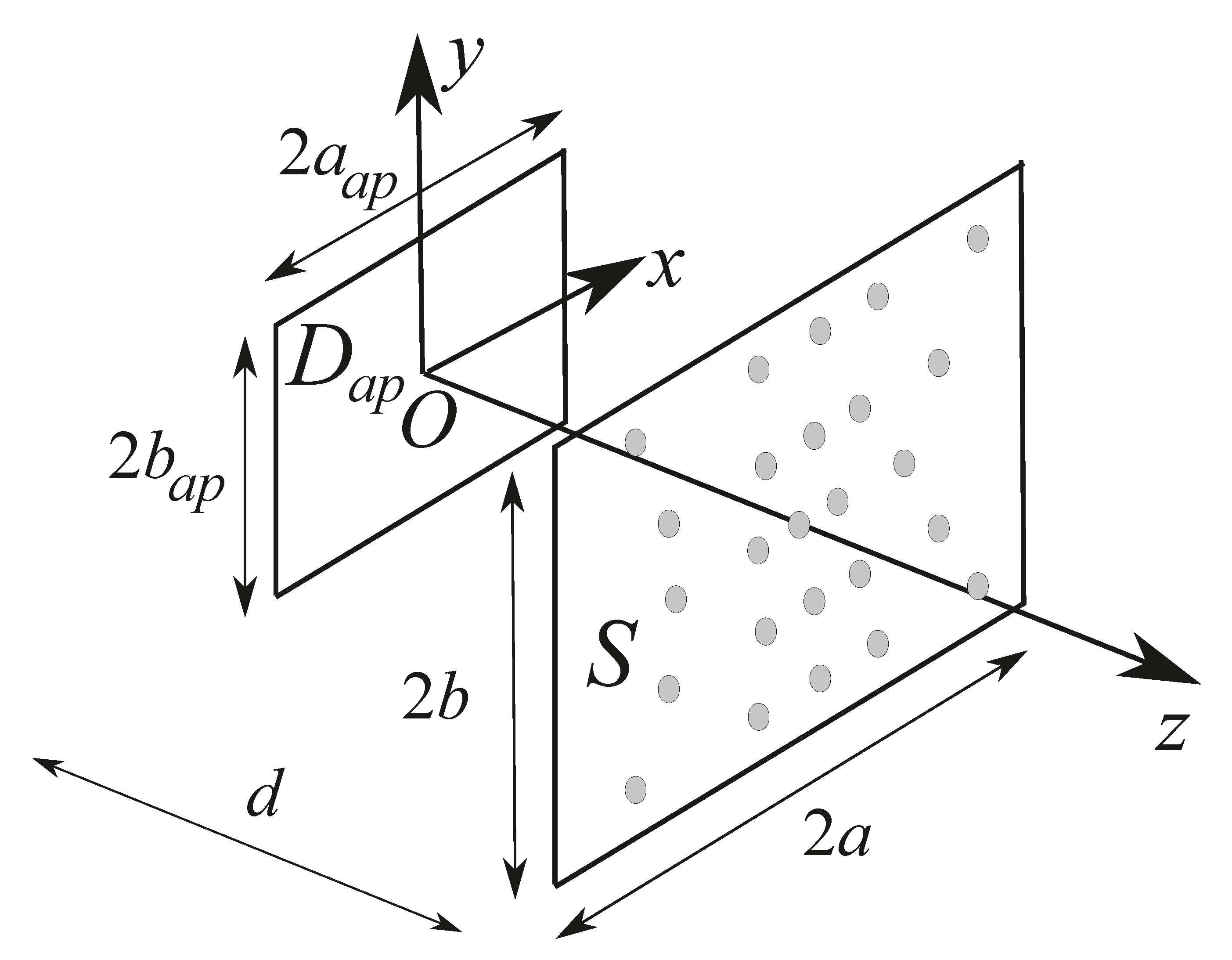




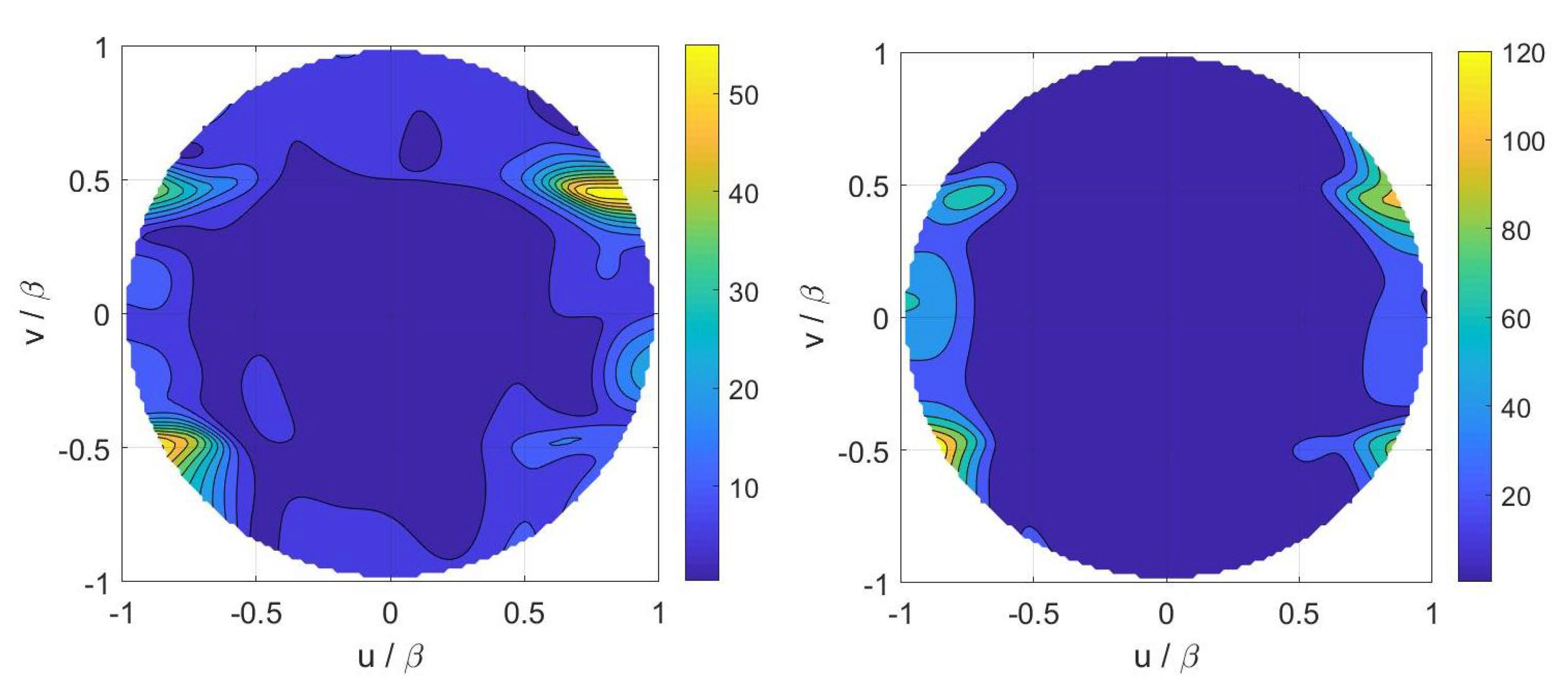
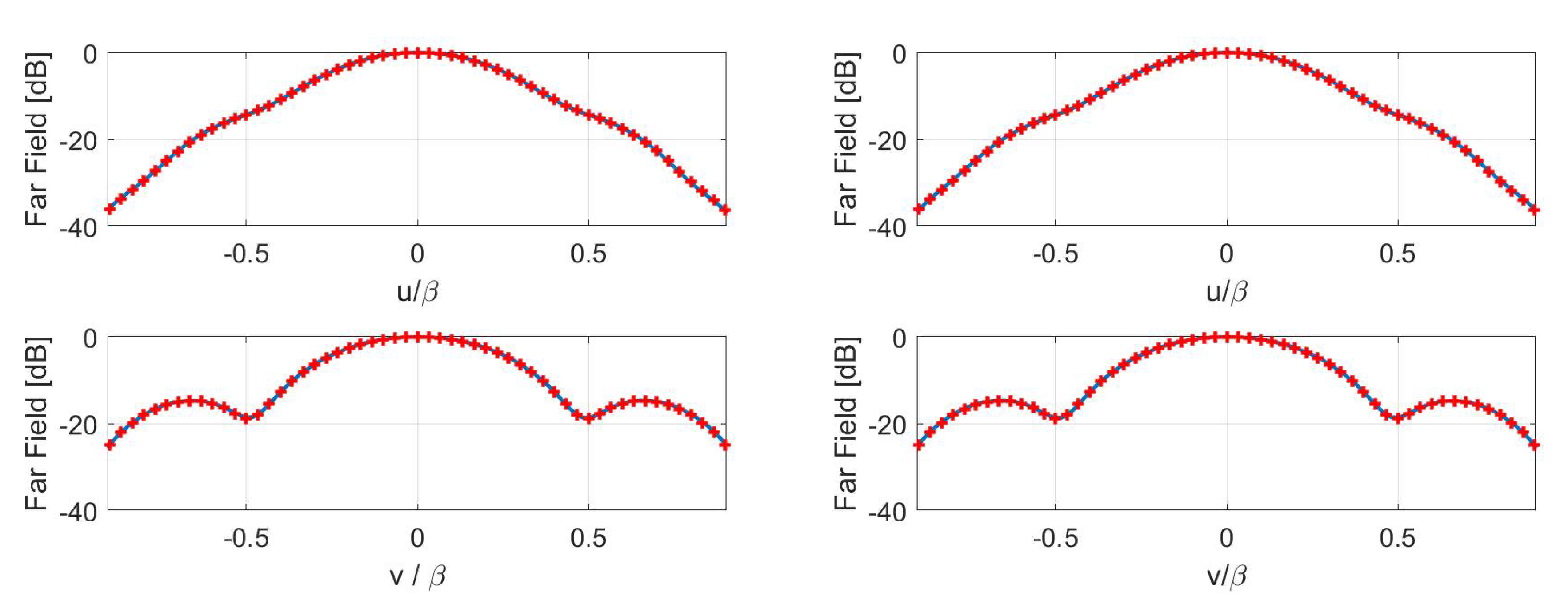



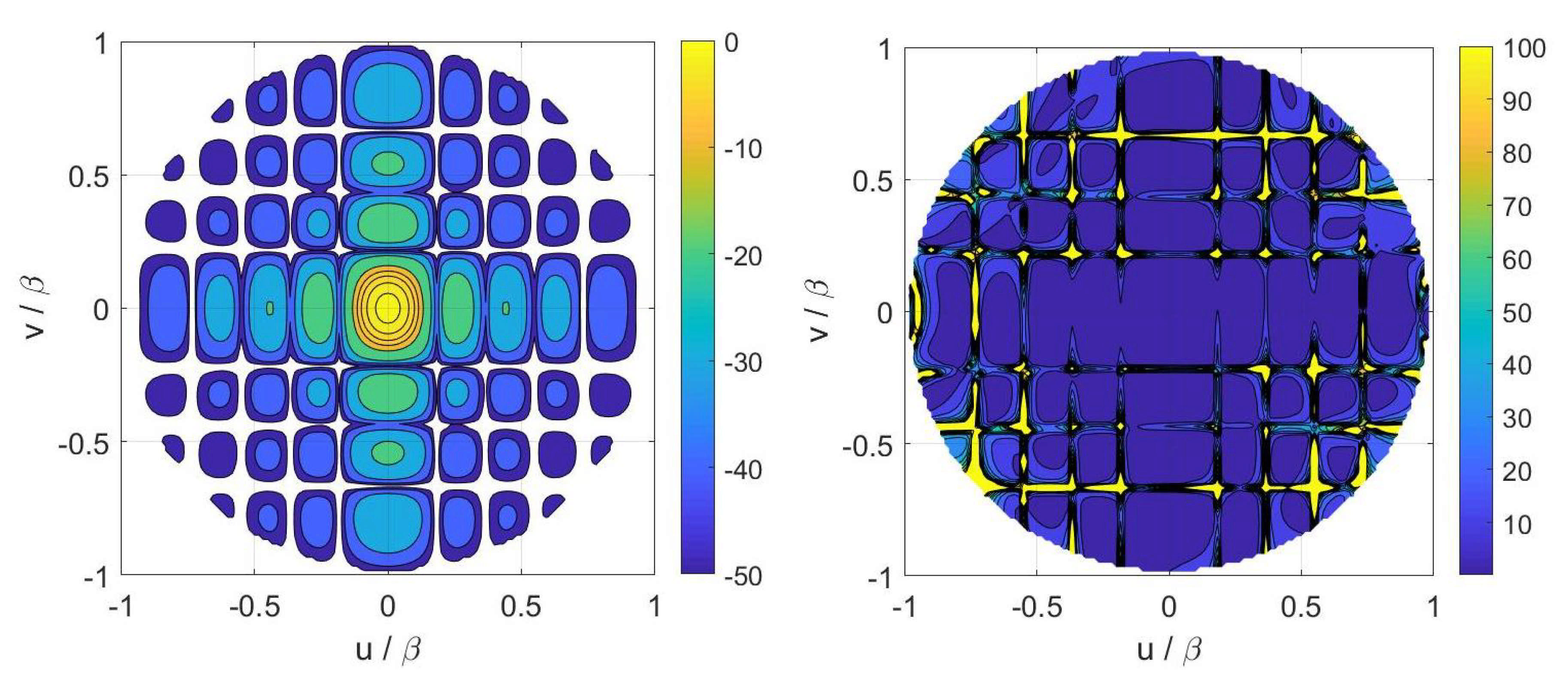
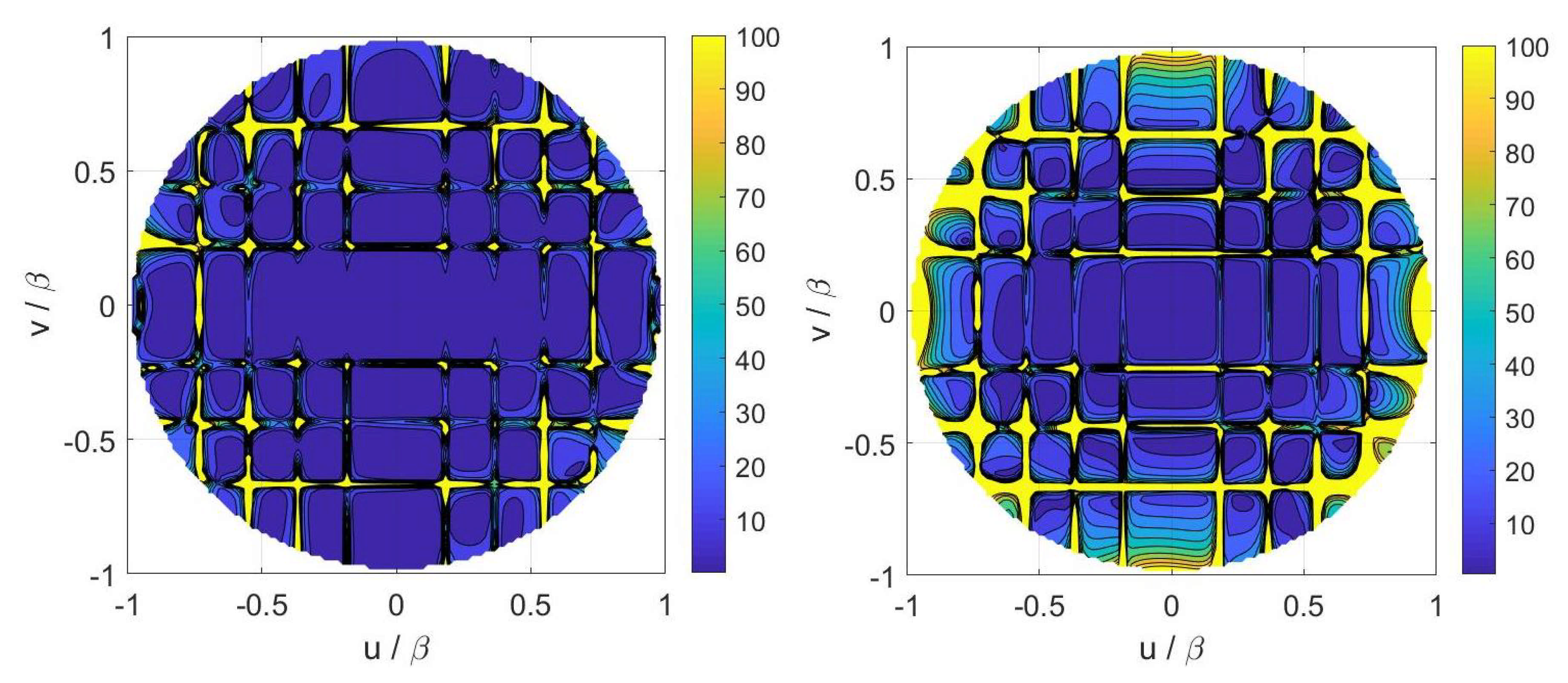

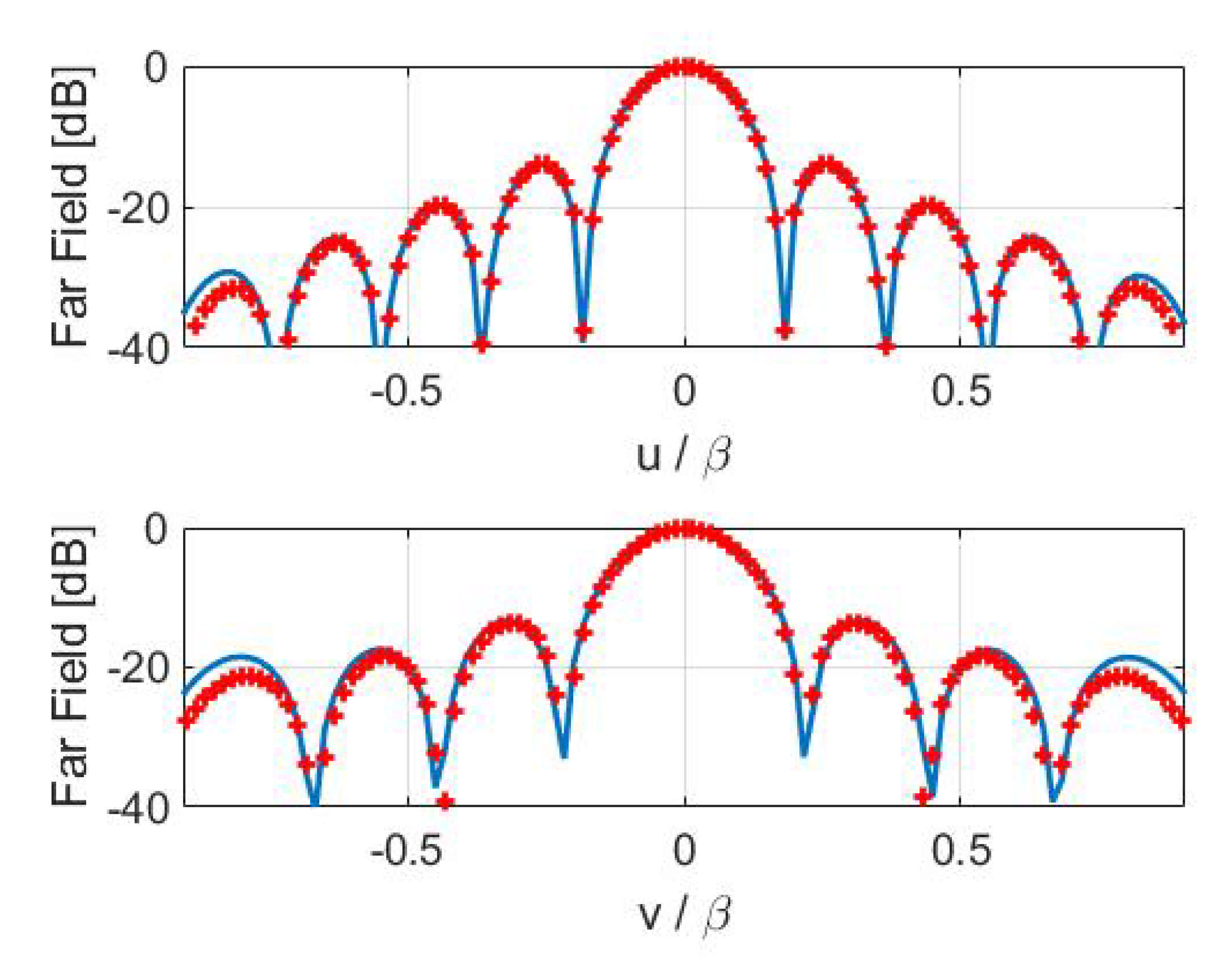
Publisher’s Note: MDPI stays neutral with regard to jurisdictional claims in published maps and institutional affiliations. |
© 2021 by the authors. Licensee MDPI, Basel, Switzerland. This article is an open access article distributed under the terms and conditions of the Creative Commons Attribution (CC BY) license (http://creativecommons.org/licenses/by/4.0/).
Share and Cite
Capozzoli, A.; Curcio, C.; Liseno, A. Different Metrics for Singular Value Optimization in Near-Field Antenna Characterization. Sensors 2021, 21, 2122. https://doi.org/10.3390/s21062122
Capozzoli A, Curcio C, Liseno A. Different Metrics for Singular Value Optimization in Near-Field Antenna Characterization. Sensors. 2021; 21(6):2122. https://doi.org/10.3390/s21062122
Chicago/Turabian StyleCapozzoli, Amedeo, Claudio Curcio, and Angelo Liseno. 2021. "Different Metrics for Singular Value Optimization in Near-Field Antenna Characterization" Sensors 21, no. 6: 2122. https://doi.org/10.3390/s21062122
APA StyleCapozzoli, A., Curcio, C., & Liseno, A. (2021). Different Metrics for Singular Value Optimization in Near-Field Antenna Characterization. Sensors, 21(6), 2122. https://doi.org/10.3390/s21062122





